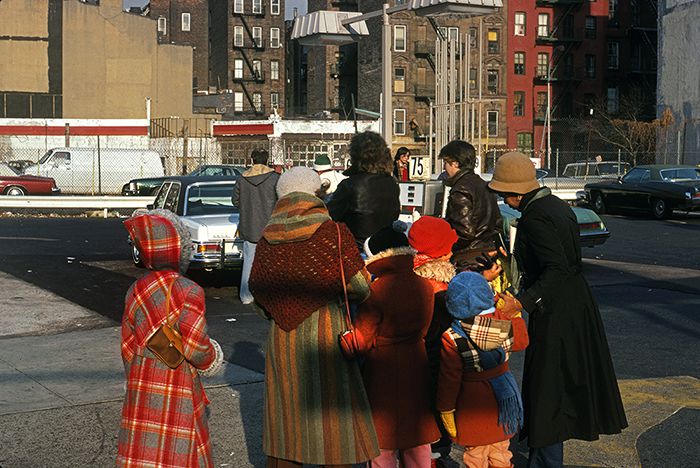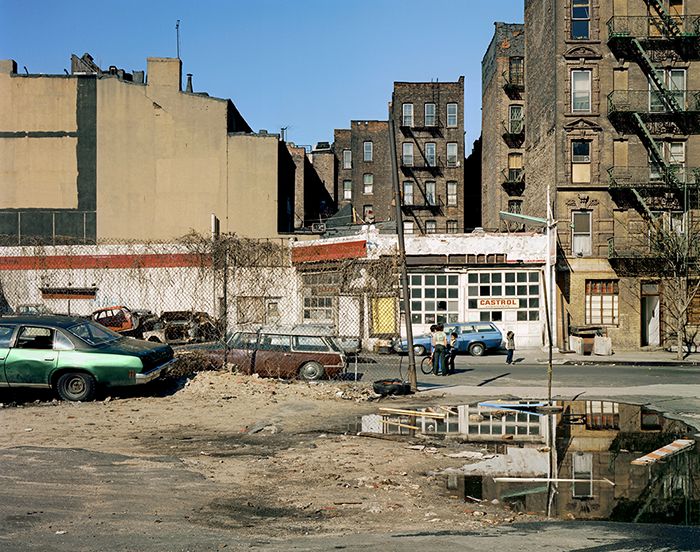
East 4th Street and the Bowery, 1977 — © Brian Rose
In 1977 I was fully engaged in shooting color, and although I still had a black and white lab set up in my tiny East 4th Street apartment, once I began making color prints, I took down my lab and never looked back. My early color work tended toward spontaneous quick grabs of things seen while going about my business. The picture above was taken while making the three block walk to school just up the Bowery to Cooper Square.
There was a Shell station on the corner of East 4th and the Bowery, and I used to walk cater-corner across it. I came upon a family dressed in colorful plaids and stripes moving in a little group, and photographed them compressed against several other people passing by, or filling up at the gas pump. The low winter sun cast a shadow of the gas station sign against the moving mingling of coats, and that was enough to make a photograph. It was about a moment more than about place — about phenomena more than information — although one may take note of the Mercedes filling up at the pump, or the fact that gas was 75 cents a gallon. You can tell it’s New York only because of the tenements glimpsed in the rear. It’s a cool picture — a keeper.

East 4th Street and the Bowery, 1980– © Brian Rose/Edward Fausty
Three years later, standing in almost the same spot, I was onto something else all together. I had assimilated my instincts for formal elements into a carefully considered investigation of place, a documentation of the Lower East Side made in collaboration with Edward Fausty. In this picture, visual anecdotes are still present — the little knot of kids in the background, the reflection in the pool of water — but instead of chasing after them, I am allowing these moments to play out within a broader scene.
In the first image I am following my instincts and showing off (a little bit) my visual chops with the camera. In the seond image I am trusting my instincts to show rather than tell — and I am relying on the viewer to bring something to the process. In a sense, asking the viewer to look with me at this place and to discover its multi-layered details.
Interestingly, you might notice that the gas station has closed. The pavement has been torn up, and dirt and rubble have accumulated. There are abandoned cars strewn about, and the kids are hanging out in the middle of the street oblivious to traffic.The door to the apartment building at right stands open to anyone off the street to enter. In 1980, when this picture was taken, New York was still in economic free fall. Eventually, a subsidized housing project for seniors rose on this lot. A drably monolithic box of good intentions, it’s still there today.
“In a sense, asking the viewer to look with me at this place and to discover its multi-layered details.”
Brian,
I think the above quote is key. Photographs that can be taken in with a glance, even those that are initially visually impressive, ultimately fail if they are not imbued with richness of detail, and nuance, and continuing discovery, for both the viewer and the photographer. For those images, we look and move on. The good ones keep us coming back.
Thanks for your comment David.